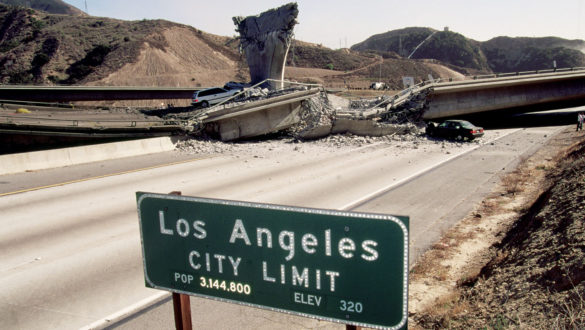
“1994, Los Angeles, California: Earthquake Aftermath” by David Butow/Corbis is licensed under CC BY 2.0.by Madelyn Moua, Staff Photographer & Bethany Pham, Staff Writer
The Great California Shakeout (GCSO) is a standard procedure across California and other countries. This became a yearly routine to promote safety regulations and preparedness in homes, schools and communities, instituted statewide after a 5.5 magnitude earthquake struck Southern California in 2008. People around California, as well as the world, should “drop, cover and hold on” at 10:19 a.m.
On July 29, 2008, the 2008 Chino Hills earthquake rocked downtown Los Angeles. In the earthquake’s wake, no lives were lost, but there was substantial damage to a good deal of structures. Nonetheless, Californians were concerned: the Chino Hills earthquake was the most powerful to have struck California since the disastrous 1994 Northridge earthquake, which notoriously destroyed huge parts of Los Angeles and racked up an official fatality count of 57. These apprehensions instigated speculation about stronger, incoming earthquakes and increased discussion over earthquake preparedness. In just four months, the GCSO was organized and held its first drill in November 2008.
The once small practice has exponentially gained traction statewide, nationwide and worldwide in the years to come. 5.9 million people reportedly participated in that November 2008 drill, then setting the record for the largest earthquake drill ever conducted. Today, 10.2 million Californians have registered to participate, while 54.9 million have registered worldwide.
In southern California, it’s common knowledge that there will always be high potential for a sizable earthquake to strike. Earthquakes in this region can range from a magnitude of 8 or lower. Northern California has suffered from a 9.2 magnitude earthquake, the highest earthquake recorded in the state, which caused damage from the Cascadia Subduction Zone to as far as the Bay Area. Overall, the U.S. is a earthquake country.
In order to keep safety regulated, there are step-by-step procedures that the Great Shakeout organization has laid out for participants practicing from schools to businesses to homes to follow.
For schools, the first procedure is to drop, cover and hold. The second step is to evacuate outside, away from potential danger. There is a “decision-making” drill which prepares teachers, parents and other administrators to prioritize the school and students. They will often review their choices, making adjustments to better the system.





